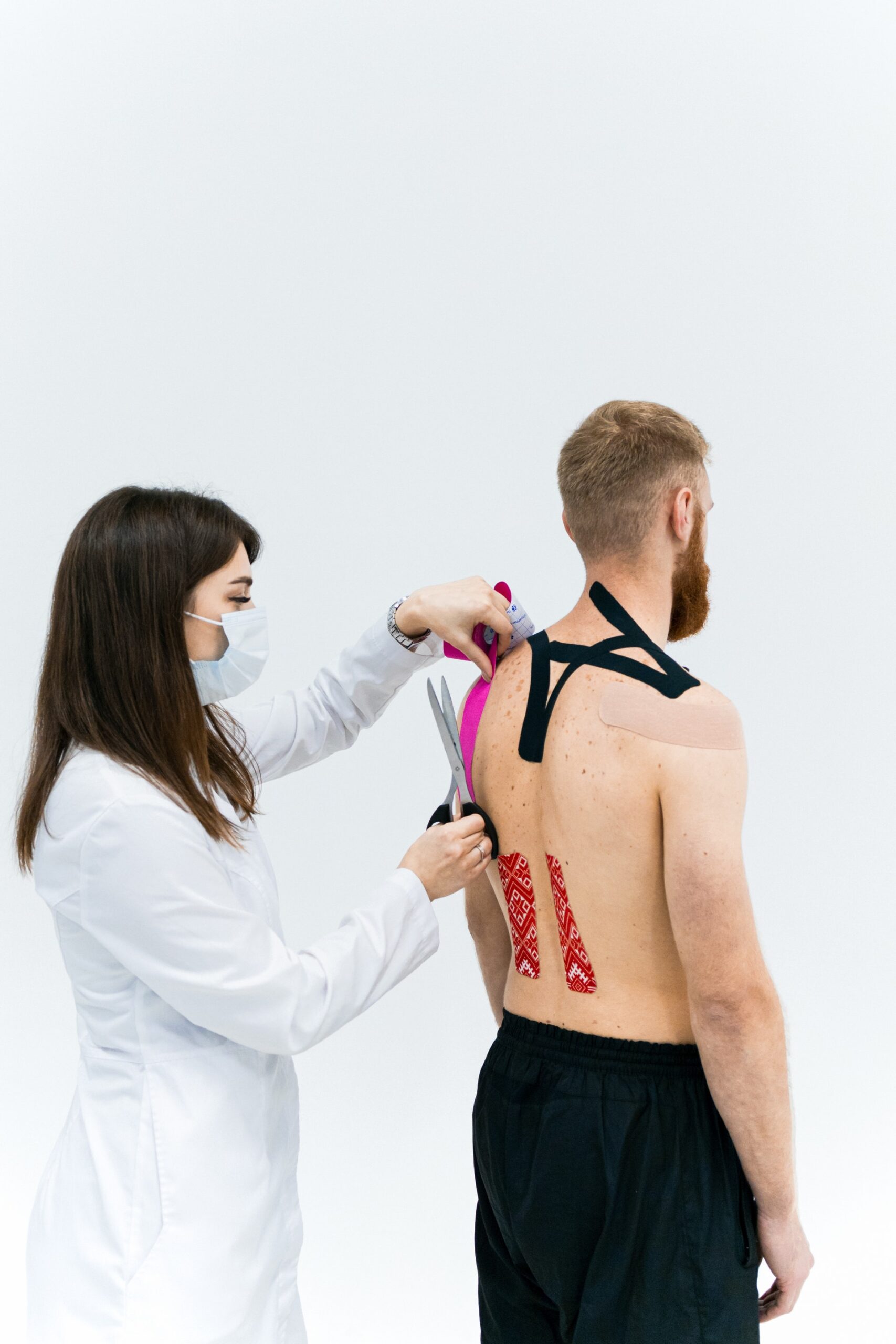Relevium: A Specialized Physiotherapist & Chiropractor
Techniques
DRY NEEDLING
Dry needling is frequently referred to as trigger point dry needling or myofascial trigger point dry needling. This treatment is conducted by professional, qualified, and certified physical therapists. It is an invasive procedure that involves the insertion of a tiny needle or acupuncture needle into the skin and muscle (at trigger points) to treat neuromusculoskeletal discomfort and movement limitations.
What is the trigger point? Trigger points are isolated, localized, hyperirritable areas of skeletal muscle located in a taut band. Compression of the spots causes pain and can result in referred pain, soreness, motor dysfunction, and autonomic abnormalities. Dry needling relieves constriction and hence enhances blood flow, thereby reducing local and referred pain.
The purpose of dry needling is to deactivate trigger points, alleviate discomfort, restore normal function, and increase a person’s flexibility. It is rarely used in isolation. Rather than that, it is a component of a broader physical therapy programme that includes other conventional physical therapy techniques. It can be used to treat a number of musculoskeletal health problems, including pain in the neck, shoulder, back, hip, calf, and heel.


CUPPING TREATMENT
Cupping is a conventional treatment that entails a physiotherapist applying suction to the affected areas for a few minutes using specific cups on the skin. This stretches your body’s tight fascia and aids in muscle relaxation. It dispels stagnation, stimulates blood circulation, and eliminates pathogenic elements. Cupping is frequently used to alleviate musculoskeletal discomfort and fascial tightness.
One should consult your certified cupping therapy practitioner before beginning cupping or any other sort of complementary or alternative medicine. For instance-
- When is cupping therapy most commonly used?
- Whether they are certified professionals in cupping therapy or not,
- Cupping therapy is contraindicated in which circumstances?
- Are there any adverse effects associated with cupping therapy?
- How many treatment sessions are required?
- Are there any precautions that should be followed following the session, or not?
OSTEOPATHY
Osteopaths are highly educated healthcare practitioners who specialize in the diagnosis and treatment of musculoskeletal disorders. They aid in the management of a variety of illnesses and patients’ long-term health and well-being. Osteopaths are licensed healthcare practitioners that take a holistic approach, evaluating the patient as a whole in order to develop a diagnosis and treatment plan that may include manual therapy, health counselling, and exercise. They customize their treatment to meet the unique demands of each patient. A competent osteopath possesses the following characteristics: communication, observation, and interpersonal skills; problem-solving abilities; an interest in the body and how it functions; empathy; initiative; and the capacity to operate independently and in a team.
The term “osteopath” refers to the process of realigning your structure in order for your body to heal itself. It is based on three central concepts: first, the body is a dynamic unit of function, which means that everything is connected; second, the body has the ability to self-regulate naturally; and third, structure governs function, which means that the proper alignment of all layers of structure enables the body to function properly. Osteopaths assist in restoring your body to its proper structure so that it can function normally.
Occasionally, due to bad posture, ageing, or accident, your structure might become misaligned, resulting in the onset of issues. Osteopaths realign the structures of the body so that the body can begin its functions spontaneously. Osteopaths efficiently treat a variety of conditions, including sports injuries, muscular spasms, ligament difficulties, ankle sprains, repetitive strain injuries, golfer’s elbow, tennis elbow, and sports injuries. Our staff is made up of certified osteopaths from a reputable university who effectively address the underlying cause of the problem and ensure the client’s complete healing.


CHIROPRACTOR
Chiropractic is a comprehensive and preventative health care method that emphasizes wellness. Chiropractors are concerned with the neurological system, which regulates every part of the body. The brain transmits information to every cell, organ, and system in the body via the spinal cord and its massive spinal nerves. Spinal misalignment can impair the body’s function and health. Chiropractors modify the spine mostly using their hands. A spinal adjustment is the exact application of force to a particular area of the spinal column. The purpose of an adjustment is to reestablish normal nerve transmission and to aid the body in self-healing. Chiropractic focuses on naturally achieving and maintaining good health without the use of medicines or surgery. Rather than addressing disease symptoms, chiropractors assist the body in healing itself by letting the body to function optimally. Chiropractic care, regardless of the patient’s age, is an integral aspect of a healthy lifestyle.
TAPING
It is a therapeutic technique in which qualified therapists apply K tape or V tape to stabilise muscles or joints in order to restore muscle and bone/joint alignment, enhance blood circulation, and assist in pain relief. K-Tape is a latex-free cotton fibre tape with a single longitudinal axis of stretch. The tape can be stretched to around 40%–60% of its resting length.
Kinesio taping is based on the following principle:
- Mechanical adjustments are made to improve stability and correct biomechanics. When K tape is placed to the skin and fascia, it elevates the skin and subcutaneous blood flow, relieving the underlying fascia of its load and so relieving pain.
- Space corrections: the elastic property of K-tape is used to elevate fascia and soft tissues, so increasing space and relieving pressure on painful and inflammatory areas.
- Ligament/tendon adjustments alleviate tension on a ligament or tendon.
- Functional corrections stimulate the senses in order to either aid or hinder movement.
- Circulatory and lymphatic adjustments aid in the movement of lymphatic fluid from densely populated areas to less densely populated areas.

